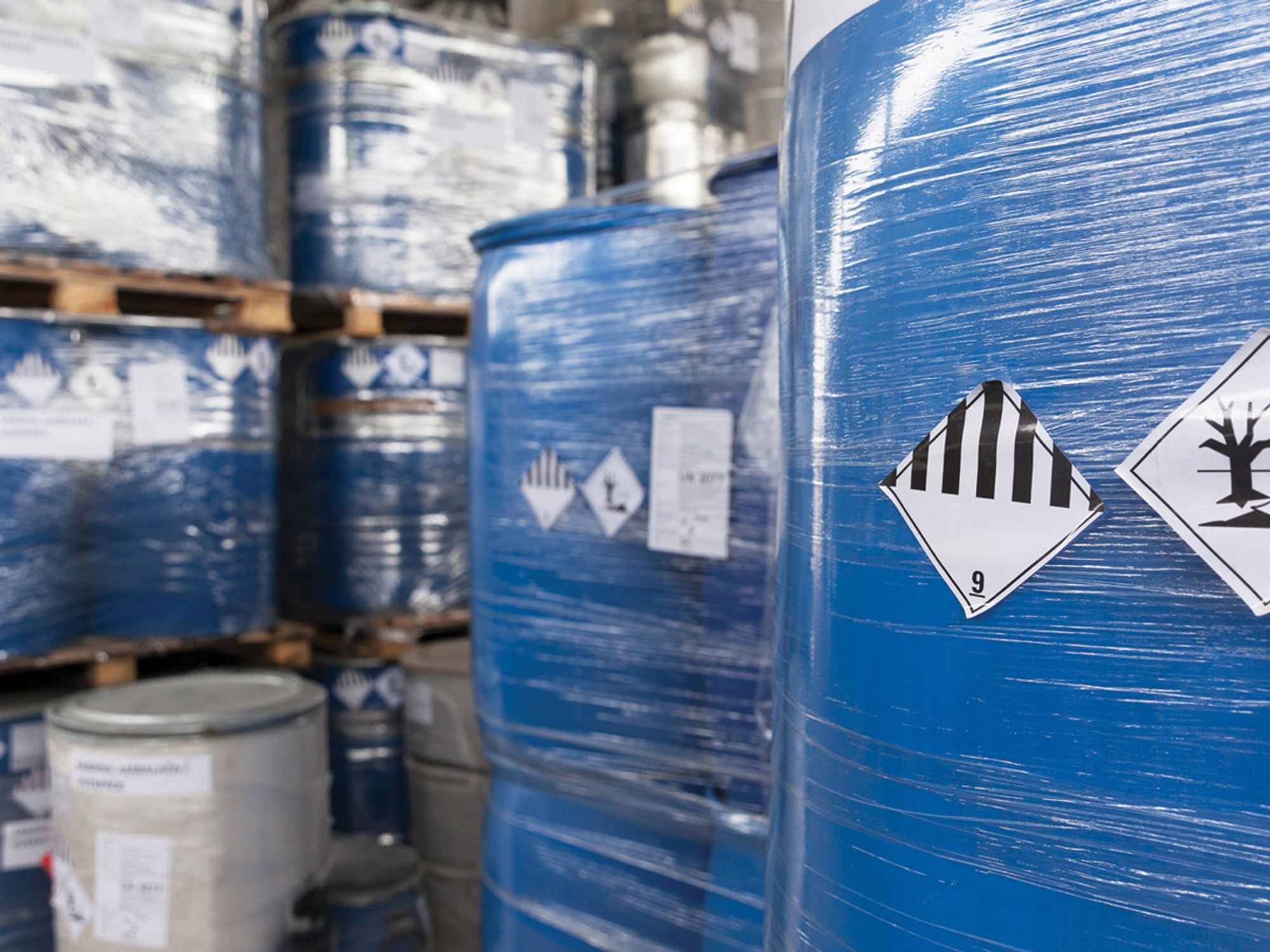Marking, labeling, and placarding

- All dangerous goods that are transported by vessel must follow regulations related to the proper marking, labeling and placarding of the materials.
Part 5 of the International Maritime Dangerous Goods (IMDG) Code contains the marking, labeling, and placarding requirements for transportation by vessel.
Markings
Unless otherwise stated, the proper shipping name and UN/ID number must be displayed on each package. In most cases, the UN/ID number must be at least 12 mm tall.
All package marks are required to be:
- Readily visible and legible,
- Able to survive three months immersion in the sea,
- Displayed on a background of contrasting color, and
- Located away from other marks that may reduce their effectiveness.
Additionally, the IMDG Code requires certain packages to contain the following marks:
- Marine pollutant – Required on packages of dangerous goods identified as a marine pollutant;
- Orientation arrows – Required with combination packages containing liquids;
- Limited quantity – Required for packages shipped as limited quantity;
- Excepted quantity – Required for packages shipped as excepted quantity;
- Lithium battery – Required on packages containing certain lithium batteries.
Labels
A package containing a dangerous good must display the appropriate hazard class label. If column 4 indicates the dangerous good has a subsidiary hazard, the package must also display the subsidiary hazard label. Labels must be:
- Located on the same surface of the package near the proper shipping name and UN/ID number;
- Placed so they are not covered or obscured by the package, marks, or other labels;
- Displayed on a background of contrasting color; and
- Able to survive three months immersion in the sea.
Placards
Most bulk packages or CTUs containing dangerous goods or residues of dangerous goods must clearly display placards on each side and each end. However, there are cases when you don’t need to placard on all four sides:
- Portable tanks having a capacity of 3,000 L or less may be placarded on two opposite sides, or alternatively, may be labeled instead.
- Railway wagon may be placarded on each side.
- A multiple-compartmented tank containing more than one dangerous substance or their residues may be placarded along each side at the positions of the relevant compartments. If all compartments are required to display the same placards, these placards need to be displayed only once along each side of the cargo transport unit.
- A flexible bulk container may be placarded in two opposing positions.
- Any other cargo transport unit may be placarded at least on both sides and on the back of the unit.
